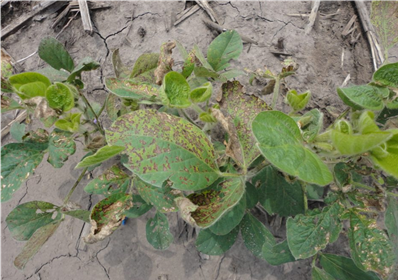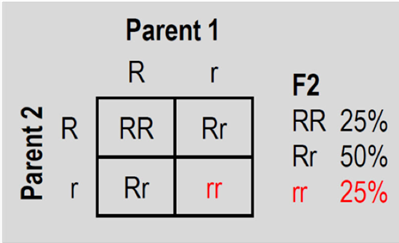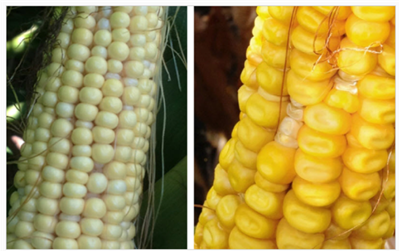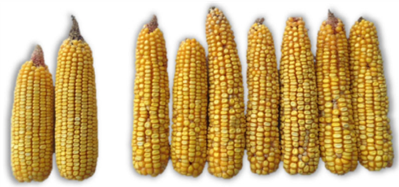Brought to you by: Jonah T. Johnson, MS, CPAg, CCA - Sales Agronomist, PCT | Sunrise
July 5, 2019: Watch out on crop growth stages & herbicide/adjuvant mixes!
Mother Nature “flipped” the switch and we are now experiencing “normal” summer temperatures in Ohio. This quick transition from 70-degree days and 50-degree nights to 90-degree days and 70-degree nights has made crop and weed growth explode in the last five days, also leaving plants with extremely thin cuticles, similar to the outermost layer of your skin.
Anytime our agronomic crops experience a rapid growth spurt, plants’ thin cuticles make the foliage very sensitive to foliar application we may impose upon the plant. High daytime temperatures coupled with strong herbicide-adjuvant mixes can lead to higher levels of crop phytotoxicity a.k.a. “crop damage” then we would normally expect to see.
Herbicides & Adjuvants
A common product mixture that is experiencing exaggerated crop response is in glufosinate-resistant soybeans. Clethodim (Select Max, Section etc.) has been used frequently to target volunteer corn. Glufosinate (Interline, Liberty etc.) requires spray grade ammonium sulfate (AMS) and surfactant to allow for successful herbicide penetration and coverage. Typically, clethodim labels request the use of an oil adjuvant, which most prescribers will recommend crop oil concentrate (COC).
When using PCT’s AdjuTec AMS Tru adjuvant with glufosinate, additional COC is not necessary. AMS Tru contains adequate AMS and surfactant levels to fulfill adjuvant needs for the glufosinate and the clethodim.
High temperatures coupled with intense sunlight radiation can intensify the improper adjuvant mixtures, hence causing a phytotoxic crop response (a.k.a. leaf burn). COC coupled with AMS Tru has seen exaggerated leaf burn due to an adjuvant overload. Growers who have chosen to use bagged, spray grade AMS with glufosinate, clethodim and COC are still experiencing soybean leaf burn. The take-home message is that extreme environmental conditions have plants stressed already, and the addition of a strong herbicide/adjuvant application will exaggerate any type of crop response.
The above picture shows soybeans exhibiting crop response from a strong adjuvant-herbicide application.
This also applies to using foliar nutritional products. If you are trying to apply herbicides and crop nutritional product together currently, our advice is to make separate trips, and with several days in between applications. Plants will need to recover from herbicide treatments, prior to receiving nutritional inputs during extreme environmental conditions. Also, consider applying crop protection and foliar feed products in the morning, evening or at nighttime, when the heat of the day has subsided.
Other product examples that should be avoided in high environmental stress are:
- Humectant-like properties (aka. keep the leaf moist and from desiccating)
- Oil emulsion products
- Interlock
- Zephyr
- Sugars
In corn, anomalies related to the seasonality of 2019, growers are seeing crop response from Group 27-HPPD inhibitors like mesotrione (Callisto etc.) and Group 15-Long-Chain Fatty Acid Inhibitors, specifically the Chloroacetamides like acetochlor (Warrant etc.) and s-metolachlor (Dual Magnum etc.)
The above pictures shows corn expressing phytotoxic crop response from a mesotrione application.
Here is a famous adage. “If you are not bronzing beans…you’re not killing weeds!” I think we can all attest to that this year. Crops will outgrow the initial injury, and new growth will improve!
Product Compatibility
Regarding product compatibility, the picture below shows how adding products that do not mix well can cause application issues.
The jar on the left has water, Interlock, Durango (glyphosate), AMS Gold Plus, COC, Section Three (clethodim) and Flexstar (fomesafen).
The jar on the right contains water, Zephyr Prime, Durango (glyphosate), AMS Gold Plus, Section Three (clethodim) and Flexstar (fomesafen).
Notice how there is no separation in the mix on the right and the product is very homogenous, versus the product on the left.
Let us know if we can “jar test” different combinations for you to prevent the mixing issues above.
Crop Safety
All postemergence herbicides have restrictions on how late in a crop stage they can be applied. Many products are only safe for broadcast application up to V6 or V8 corn. In corn, off‐label late postemergence herbicide applications can cause issues with ear development. Critical reproductive development is occurring in the corn plant during the early vegetative growth stages. It is very easy to reduce rows per ear, kernels per row, or cause kernel abortion, even with products like glyphosate applied to resistant hybrids. Be aware that crop oils, surfactants, and other adjuvants can increase the risk of injury so read and follow label instructions carefully.
Late Glyphosate Application to Glyphosate-Resistant Corn
Most glyphosate labels specify applications can be applied over the top to corn with Roundup Ready® 2 Technology up to the V8 stage or until the corn reaches 30 inches tall, whichever comes first. Corn that is 30 to 48 inches tall, treatments can only be made using a ground applicator equipped with drop nozzles. 48-inch-tall corn is the cutoff for glyphosate applications. If applied later, ear damage can occur through ovule death on developing kernels on the ears.
Question: You may be thinking, “How can late glyphosate applications harm glyphosate-resistant corn?”
Answer: Damage from late-applied glyphosate can kill up to 25% of developing ovules (unfertilized kernels) on pollinating corn ears. So, in theory, you could experience up to a 25% yield reduction in a worst-case scenario.
Here’s the reasoning: Mendelian Genetics. If you recall your high school biology days, you might remember simple Punnett squares to predict the genotypes of a particular cross or breeding experiment.
Why are 25% of the kernels potentially affected?
- Many glyphosate-resistant hybrids are not homozygous (a.k.a. completely dominant-RR) for the trait – 1 parent (typically the female parent) is resistant to glyphosate and the other is not.
- The “offspring,” a.k.a. resulting hybrid plants are all heterozygous for the trait (Rr), with 1 resistant and 1 susceptible allele (in this case, susceptible to glyphosate). The resistant allele is dominant, so the hybrid plants are all glyphosate-resistant.
- The fertilized kernels on the plant represent the “offspring” generation. Since the “offspring” embryos (a.k.a. ovules/kernels) are all the product of 2 heterozygous F1 parents (a.k.a. Half-dominant, Half-Recessive-Rr), they will segregate out into 25% homozygous resistant, 50% heterozygous resistant, and 25% homozygous susceptible.
- This means that approximately 25% of the developing kernels on an ear are susceptible to damage if exposed to glyphosate.
So, for the potential 25% of the kernels that are susceptible to glyphosate, the germ can die while the seed coat and endosperm remain alive.
- Initially, the kernels look like a translucent “bubble” appearance.
- As ear development progresses, the damaged kernels will appear hollow and eventually collapse.
- The adjacent kernels expand to fill the gaps left by the injured kernels, resulting in the ear having a jumbled appearance.
The above corn ears on the right showing the effects of late (off-label) application of glyphosate on corn. Two corn ears on the left are from an area in the same field that was not sprayed with a late application of glyphosate





